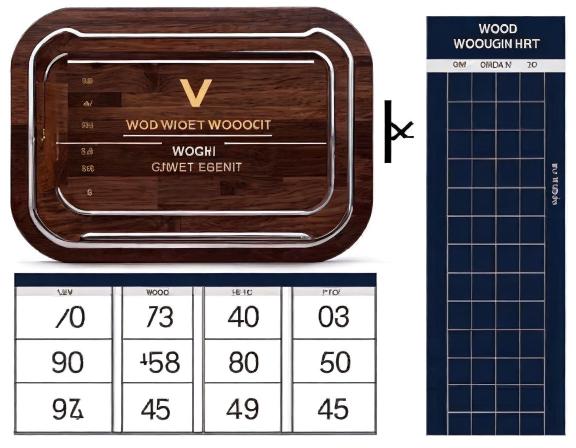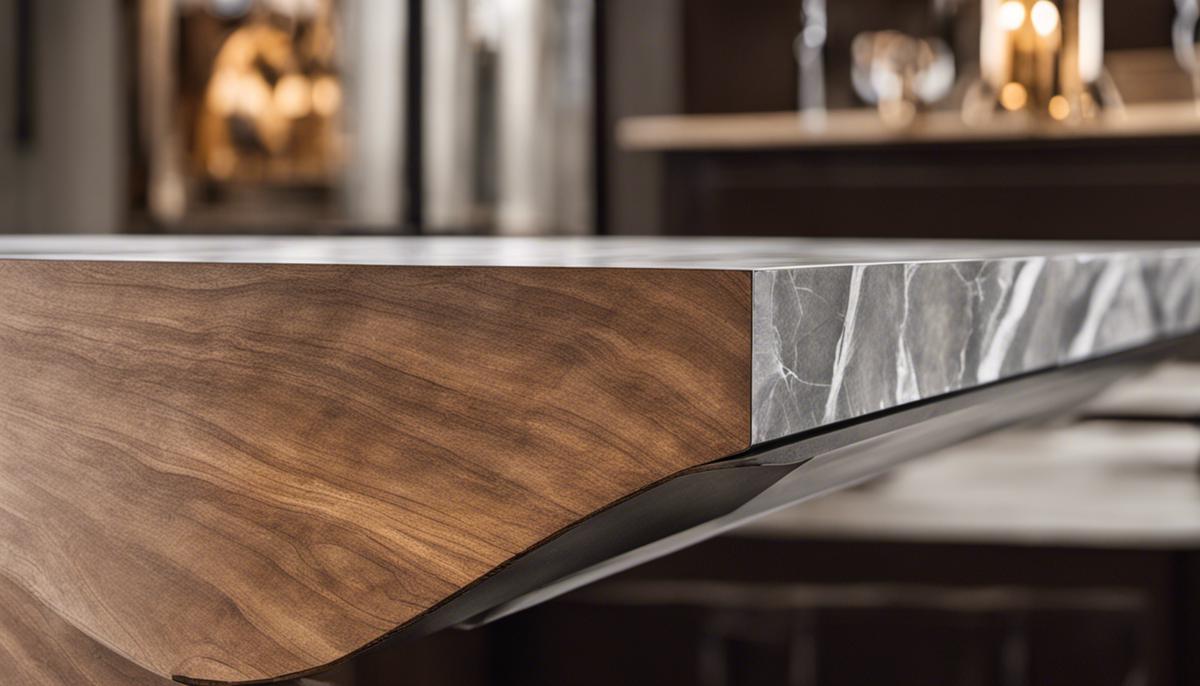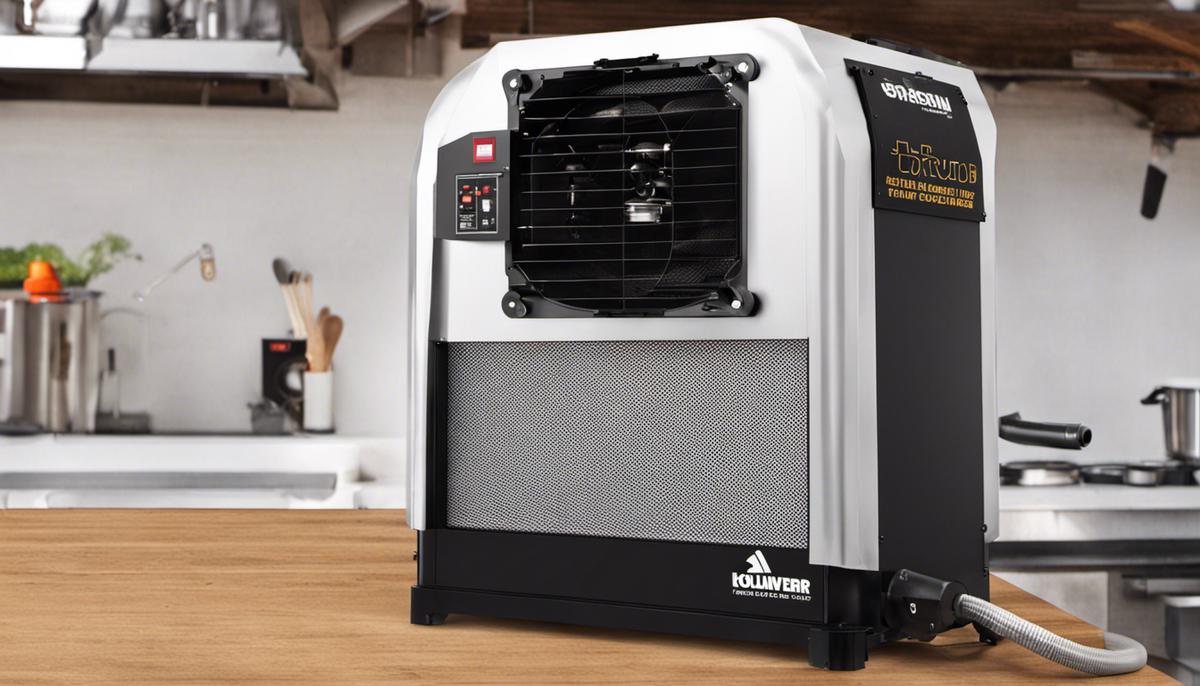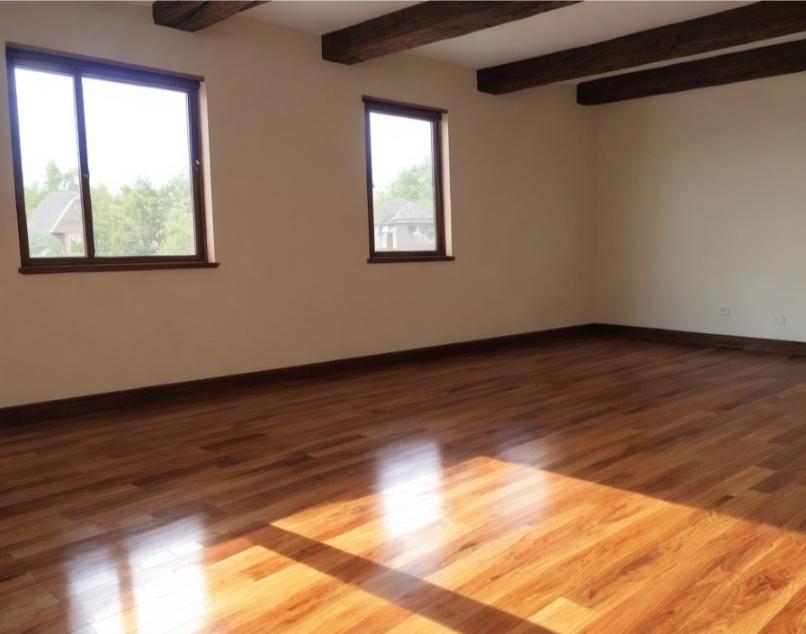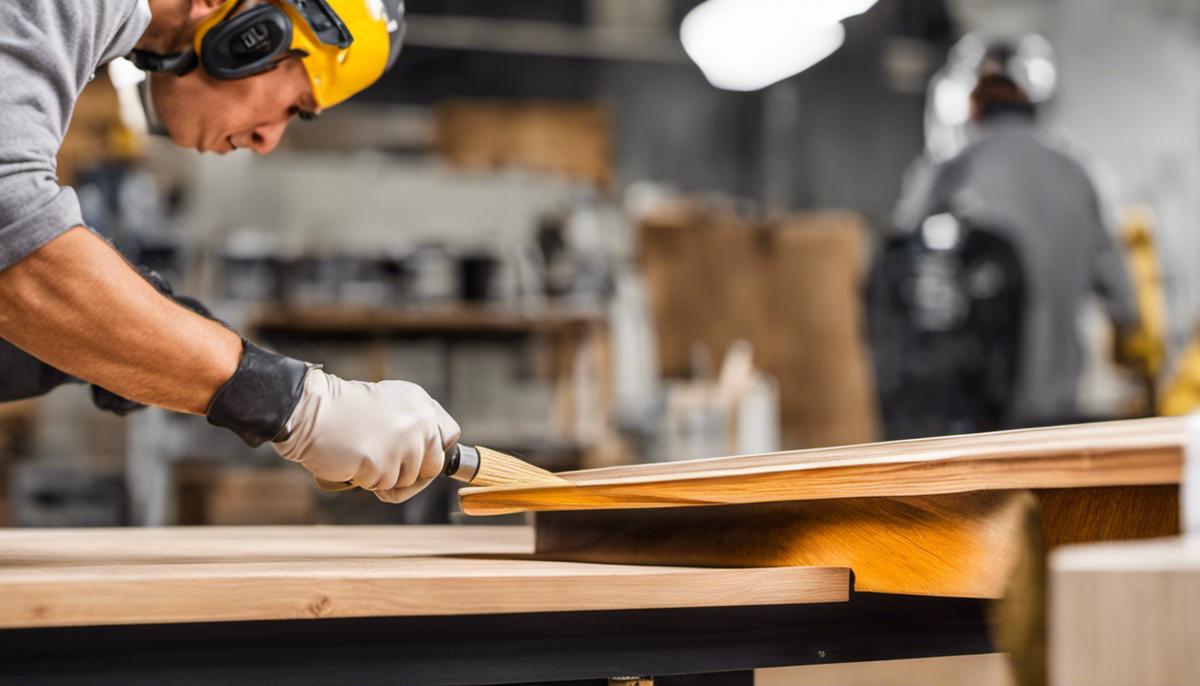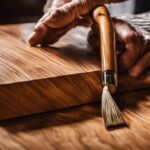Having a laminate tabletop in your home or workspace can add a touch of gloss and durability, but they are not invincible. Over time, you’re bound to encounter scratches, burns, and chips from wear and tear.
The good news, however, is that with the right materials, tools, and knowledge, you can restore the integrity and appearance of your laminate tabletop.
This discussion will guide you through understanding the different types of damages, selecting the right repair materials, the step-by-step repair process, some hands-on repair work, as well as essential tips on maintaining a laminate top to minimize future damages.
It’s all about mastering the technique and applying it to keep your laminate tabletop looking as good as new.
To repair a laminate table top, clean the surface thoroughly and use a laminate repair kit to fill in any chips or cracks. Smooth the repaired area and protect it with a clear laminate sealer for a seamless finish.
Understanding Types Of Laminate Table Top Damages
| Type of Damage | Description | Causes | Repair/Maintenance |
|---|---|---|---|
| Scratches | Surface abrasions, minor marks | Abrasive objects, sliding items | Use furniture polish or a laminate repair kit. Avoid dragging sharp objects. |
| Stains | Discoloration or blemishes | Spills, food, liquids | Clean promptly with mild soap and water. Use coasters or placemats. |
| Chipping | Small, sharp-edged breaks | Impact, dropped objects | Fill with laminate repair paste. Use protective edge bumpers. |
| Warping | Surface deformation, unevenness | Moisture, heat, humidity changes | Maintain consistent room conditions. Avoid exposure to extreme elements. |
| Delamination | Layers separating from the core | Moisture, humidity | Prevent moisture exposure. Consult a professional for repair or replacement. |
| Burns | Heat-induced scorch marks | Hot cookware, cigarettes | Sand lightly, use a laminate repair kit, or seek professional help. |
| Fading | Loss of color vibrancy | Sunlight, UV exposure | Keep out of direct sunlight when possible. Use UV-resistant finishes. |
One of our articles –How to straighten a warped table top.
Table of Contents
- Understanding Types Of Laminate Table Top Damages
- How to Repair a Laminate Table Top
- Materials and tools for laminate repair
- Repair process
- Hands-on practice
- Maintenance tips
- Related Questions
How to Repair a Laminate Table Top
Laminate repair formica table tops are renowned for their hardness and durability, but like any piece of furniture, they can suffer damage over time.
These damages can be categorized into three main areas: scratches, chips, and burns. Each type of damage affects the integrity and appearance of the table top differently, thus requiring a unique approach when it comes to repairs.
Scratches on Laminate Table Tops
Scratches are one of the most common types of damage to laminate table tops.
They can occur from everyday use, such as sliding plates or cups across the surface or accidentally dropping sharp or heavy objects. Scratches can cause unsightly lines and marks on the table top, detracting from its smooth, clean appearance.
They can be either light and hardly noticeable or deep, affecting the table top’s texture and even exposing the layer underneath the laminate.
Chips on Laminate Table Tops
Another common type of damage is chipping. Here’s how to repair a chipped laminate tabletop..
These typically occur when heavy or pointed objects fall onto the table surface, causing small pieces of the laminate to break off. Unlike scratches, which mostly affect only the surface layer, chips can reach the inner layers of the table top and cause structural damage if not addressed promptly.
Chips often leave noticeable indentations that disrupt the seamless surface of the table top, making them more prominent and potentially affecting the table’s smooth functionality.
Burns on Laminate Table Tops
Last but not least, burns are a type of damage that can occur from placing hot objects directly onto the laminate table top without a protective barrier.
This can result from hot pans, heated appliances, or even if a lit cigarette is left on the surface. Burns can cause discoloration and/or blistering on the table top, and severe instances might warp the surface.
In contrast to scratches and chips, burns may alter the table’s coloration, leaving behind white or darkened patches depending on the severity of the heat exposure.
Each of these damages—scratches, chips, and burns—can degrade the overall appearance of your laminate table top and, in some cases, compromise its material integrity.
Fixing these damages promptly and correctly ensures the longevity of your table top and preserves its aesthetic appeal.
One of our articles –How to repair glass table top.
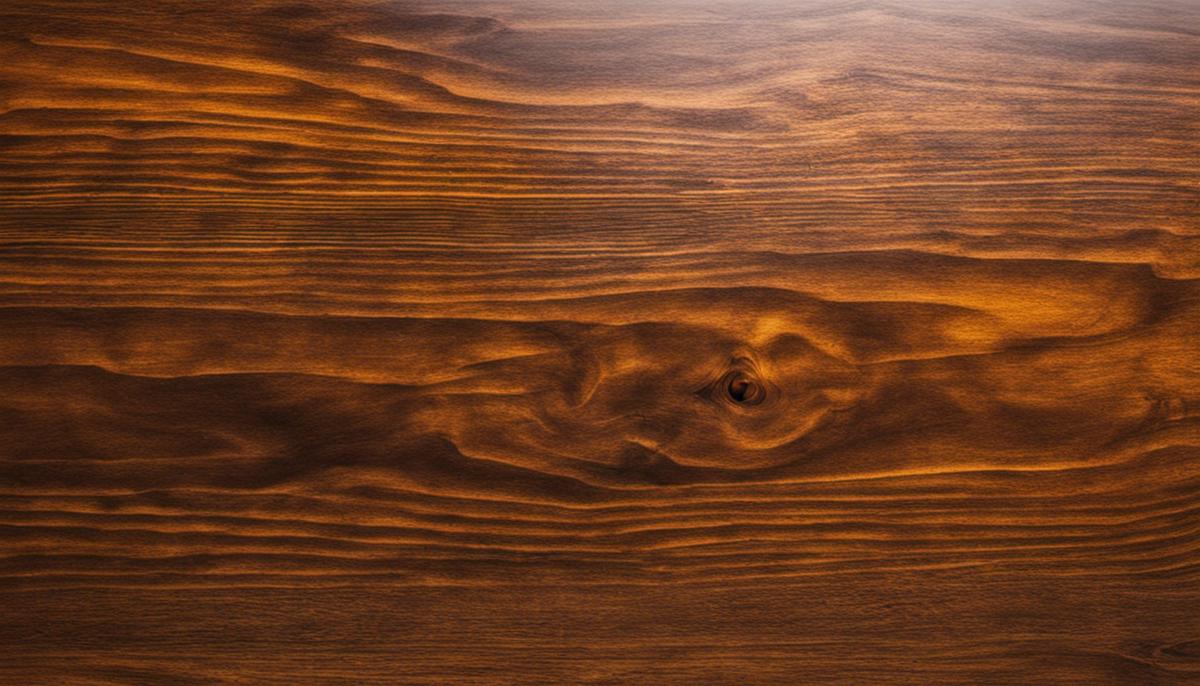
Materials and tools for laminate repair
Required Tools and Materials
To fix your laminate table top, you will need several tools and materials. These include:
- Laminate Repair Paste: This substance is crucial for mending minor damages such as scratches or tiny chips in the laminate surface. It is available in various colors to match your table top.
- Putty Knife: This tool is utilized for applying, spreading, and smoothing the repair paste onto the damaged area.
- Sandpaper: After the repair paste is dry, you use sandpaper to smooth the repaired area, integrating it flawlessly with the rest of the table.
- Paintbrush: If your repair involves a larger surface area, a touch-up paint that matches your laminate top may be necessary. Here, a paintbrush will come in handy.
- Latex Gloves: Repairs can get messy; thus, latex gloves are handy to protect your hands from the repair paste and paint.
- Cloth or Sponge: These are necessary for clean-up after the repair is done.
Here is another tool for Laminate countertop repair kit.
One of our articles –Table Top Dust Collector.
Selecting the Right Products
Choosing the right products for your laminate repair depends on the type and extent of damage to your tabletop.
For minor scratches and chips, a laminate repair paste in the exact color as your tabletop will suffice. This paste is designed to fill in and cover small blemishes, seamlessly blending with the existing laminate.
In situations where a larger portion of the laminate is damaged or peeling, you may need to consider more than just repair paste. Epoxy resin or a similar laminate material could be necessary to adhere to the peeling areas and fill in larger gouges. Afterward, it should be sanded down to create a seamless surface.
Remember, the key to a successful laminate repair is matching the color and texture of the repair products to your existing tabletop as closely as possible.
Therefore, always carry a sample or a picture of your laminate when shopping for repair products. This ensures that the repair area blends seamlessly with the existing surface once the job is completed.
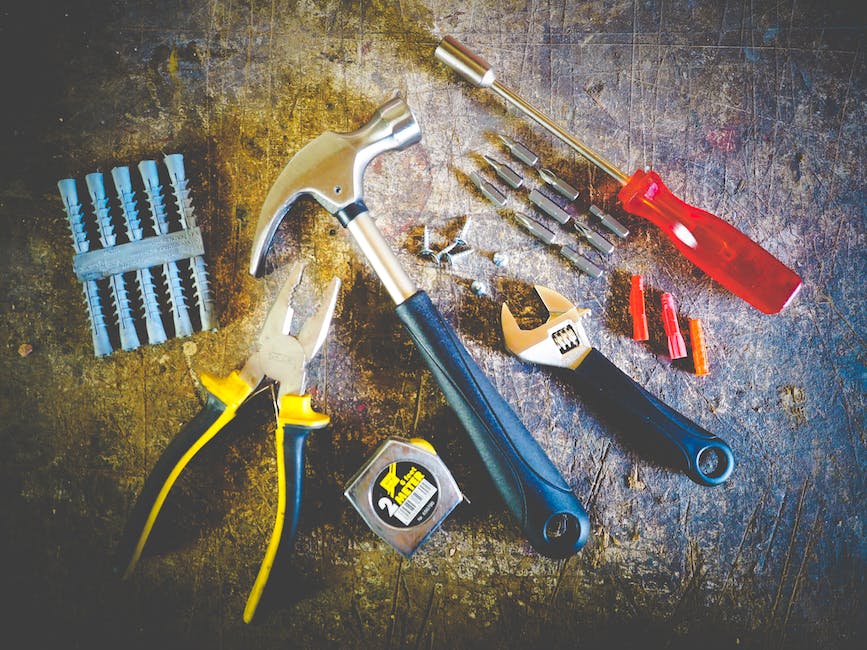
Repair process
Examining the Damage
Start by closely examining the damage to your laminate table top. Identify the kind of damage it has incurred.
This could range from minor scratches, gouges, chips, burns, or stains. The type of repair process would depend on the extent of damage.
Gather Your Materials
Purchase a laminate repair compound suited to the color of your table. If a burn has caused the damage, you’ll need a laminate filler.
For minor scratches, you may only need a laminate finisher. You’ll also need a putty knife, a soft cloth, and sandpaper.
Preparing the Damaged Area
Clean the damaged area thoroughly before repairing. Use a damp cloth to wipe away any grime or dust that may interfere with the repair compound adhering to the table’s surface. Let the area thoroughly dry before proceeding to the next step.
Applying the Repair Material
Depending on the type of damage, the repair process varies. For minor scratches, simply apply the laminate finisher, following the manufacturer’s instructions carefully.
For deeper scars, such as chips or gouges, apply the repair compound to the damaged area using a putty knife. Gently smooth the filler into the damage until it is level with the rest of the table top.
Let it Dry
Once the filler or finisher is applied, let it dry. The drying time varies according to manufacturers’ instructions, so be sure to read them properly.
Sanding the Surface
With a piece of fine-grit sandpaper, gently sand down the hardened repair compound until it’s flush with the rest of the table top surface.
Be sure to only sand the repaired area lightly, as over-sanding could damage the surrounding laminate.
The process of smoothing the surface of the table top to remove scratches or imperfections
Wiping Clean and Polishing
Use a soft cloth to wipe away any dust or residue left by the sanding process. Then apply a furniture polish or wax to the entire table top, following the product’s instructions.
This helps to blend the repaired area with the rest of the table, and restore shine to the surface.
By following these instructions carefully, you can repair your damaged laminate table top and restore its original shine.
Make sure you abide by all the product instructions and always work in a well-lit and ventilated space for safety.
One of our articles –Table Top Edge Profiles.
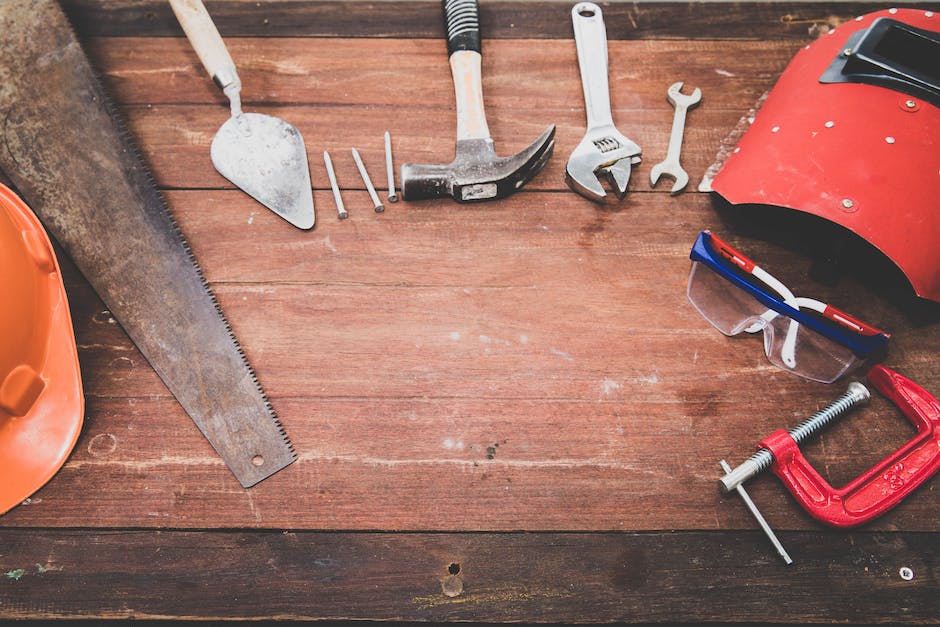
Hands-on practice
Materials You Will Need
Before you start repairing your laminate table top, gather the necessary materials. You’ll need sandpaper (220 grit), a clean cloth, a utility knife, laminate repair paste, a putty knife, and clear sealant.
Identifying the Damage
First, identify the type of damage incurred by the table top. It can range from minor scratches and chips to more severe surface cracks or peeling.
The approach to repair will vary depending on the kind of damage.
Clean and Dry the Surface
Before starting the repair, ensure the table top surface is clean and dry. Wipe down the table with a damp cloth and then dry it thoroughly with a clean towel.
This will ensure there are no food or drink stains which can interfere with the repair work.
Sanding the Damaged Area
Begin by sanding the damaged area lightly with your 220-grit sandpaper.
This will make the surface smooth and enable the repair materials to adhere better. Careful to not overdo it to avoid affecting the texture of the surrounding undamaged area.
Applying the Laminate Repair Paste
Next, use the putty knife to apply the laminate repair paste to the damaged area on the table top. Ensure the paste fills any gouges or cracks completely.
Laminate repair paste usually comes in a variety of colors, so try picking one that closely matches your table top.
Smoothing the Surface
Smooth out the surface of the repair by running the putty knife over the applied paste. Aim to make the surface as even as possible with the surrounding areas.
Allow the paste to dry as per the manufacturer’s recommended time.
Adding a Finish
Once the repair paste has dried, sand the area lightly once again to ensure a smooth finish. If necessary, apply a clear sealant over the repair to protect it and give it a polished, completed look. Allow the sealant to dry thoroughly before using the table top.
Inspect the Results
Finally, take a moment to inspect your handiwork. If you followed these steps carefully, your laminate table top should now be restored to its original state!
Remember, practicing these steps regularly will enhance your practical skills and ability to fix similar issues in the future.
One of our articles –Portable Ping Pong Table Top.

Maintenance tips
Caring for your Laminate Table Top
Your laminate table top is not just a surface for eating or working; it’s also a reflection of your home’s character.
Ensuring its longevity is crucial. Start by regularly cleaning the laminate top. Use a damp cloth and mild detergent to gently wipe the surface.
This practice will remove dust, spilled foods, or beverages, which will help maintain its lasting shine.
However, avoid using abrasive cleaners that could leave scratches on the surface. Also, never use steel wool or scouring powders for the same reason.
Laminate is durable but not impervious to deep scratches or gouges.
In comparison, a microfiber cloth is a friendlier option, as it is softer and reduces the chance of scratching.
Preventive Measures for Laminate Table Tops
Most damages to laminate table tops occur due to heat or water exposure. To prevent heat damage, always use coasters or placemats when placing hot items on the table. To assure water or moisture doesn’t sit on the surface, always wipe spills immediately.
In addition, avoid sliding rough-bottomed objects across the table top. This will help protect the surface from unnecessary scratches.
Burn marks or discoloration that can occur when hot objects are placed directly on the laminate surface.
Using Tablecloths and Placemats
Tablecloths and placemats are not just decorative; they can also protect your laminate tabletop. Consider using these items during meals or whenever the table is in use.
They will safeguard the surface from scratches, spills, and heat damage, thus extending the life of your tabletop.
Choose a tablecloth or placemat that is easy to clean and resilient enough to withstand the type of use the table regularly receives. Also, select a size that adequately covers the table to maximize protection.
Remember that while laminate is a durable surface, it is not indestructible. By following these measures, you can keep your laminate tabletop in prime condition, ensuring its elegance endures for longer.
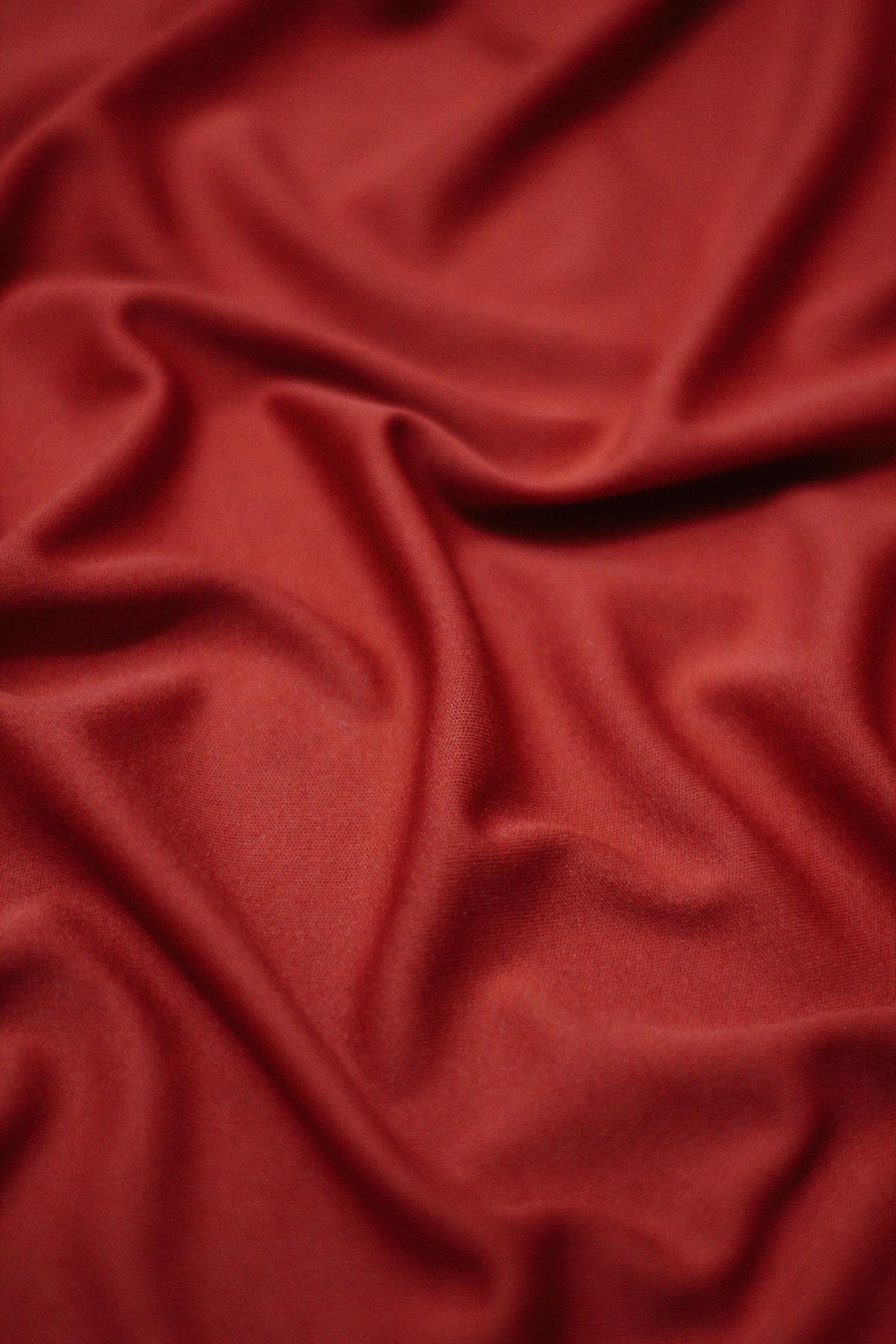
Photo by jacksondavid on Unsplash
After mastering the basics of laminate tabletop repair, the techniques, and maintenance practices, it’s evident that keeping your surface damage-free is not as daunting as it may seem.
Beyond repair, proper maintenance measures such as regular cleaning and the use of coasters, tablecloths, and placemats can work wonders in preserving the lifespan and appearance of a laminate tabletop.
Putting these insights into practice gives you the real-time experience you need to solve similar issues in the future.
Remember, every scratch or chip is a learning opportunity to improve your skills and extend the longevity of your laminate surfaces.
One of our articles –Portable Domino Table Top.
Related Questions
Can you replace a laminate table top?
Yes, you can replace a laminate table top. It involves removing the old top and attaching a new laminate surface to the table's base.
How can I repair scratches on a laminate table top?
You can repair minor scratches by gently sanding the affected area and applying a matching laminate repair paste or filler. For deeper scratches, consider replacing the damaged section with a new laminate piece.
What should I do about laminate chips on my table top?
For small laminate chips, you can use adhesive specifically designed for laminates to bond the chipped piece back in place. If the chip is too large or missing, you may need to replace the entire affected section with a new laminate piece.
What is heat damage on a laminate table top?
Heat damage includes burn marks or discoloration caused by placing hot objects directly on the laminate surface. To repair heat damage, you can try using a laminate repair kit, sanding the area, and applying a finishing coat to restore its appearance.
How can I remove stains from a laminate table top?
Stains caused by spills or substances penetrating the laminate can often be removed with mild soap and water, followed by a thorough rinse. For stubborn stains, you may need to use a gentle abrasive cleaner or a paste of baking soda and water.
Can I repair a laminate table top myself?
Minor repairs like scratches and small chips can often be done DIY with the right tools and materials. However, for extensive damage or if you're unsure about the process, it's advisable to consult a professional to ensure a quality repair job.
Resources
https://www.tandfonline.com/doi/abs/10.1163/016942411X580234
https://www.sciencedirect.com/science/article/pii/S0950061811005514

